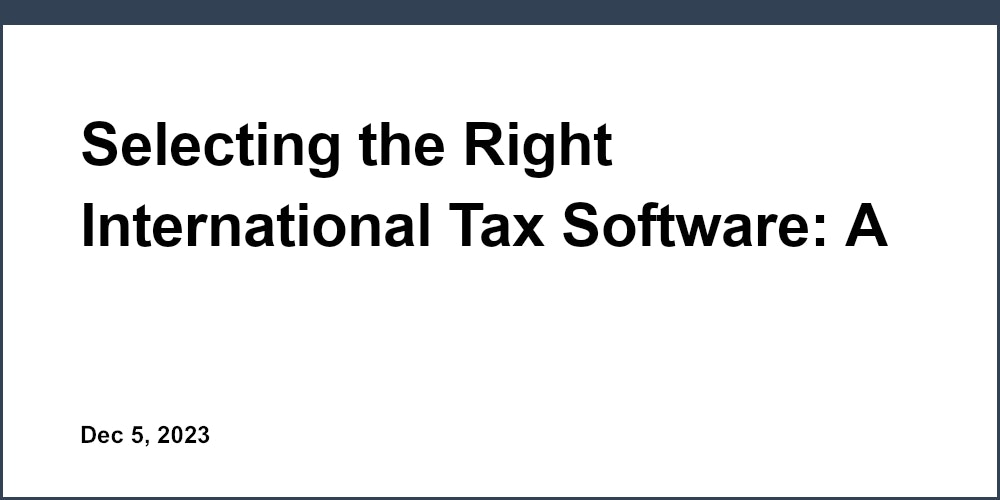Reporting capital gains taxes can be confusing for many investors.
Form 2439 provides clarity on taxes owed for undistributed long-term capital gains, helping shareholders calculate tax liability.
This guide explains what Form 2439 is, who should receive it, how to report it, and how it impacts your taxes. You'll also learn key takeaways for properly navigating undistributed gains.
Understanding Form 2439: A Guide for Shareholders
Form 2439 is an important tax document that notifies shareholders of undistributed long-term capital gains. These gains originate from regulated investment companies (RICs) and real estate investment trusts (REITs) that the shareholder has invested in.
When RICs and REITs realize net capital gains on their investments over the course of a year, they have the option to retain some or all of these gains instead of distributing them out to shareholders. Form 2439 serves to inform shareholders of their share of these undistributed gains, which allows them to properly calculate taxes owed.
Defining Form 2439 and Its Role for Shareholders
Form 2439, also known as the "Notice to Shareholder of Undistributed Long-Term Capital Gains," is issued by RICs and REITs to provide shareholders with information on capital gains that were realized but not distributed as dividends over the past year.
These undistributed gains are still considered income for tax purposes. Shareholders must report them on their tax returns and may owe taxes on these gains, even though they did not actually receive a distribution.
Form 2439 outlines the shareholder's proportional share of gains retained by the fund. It enables shareholders to increase the basis in their shares and accurately report capital gains. This prevents double taxation by ensuring shareholders don't owe taxes twice on the same gains.
The Timeline for Filing and Receiving Form 2439
RICs and REITs must issue Form 2439 to shareholders by January 31st of the year following the tax year when the undistributed gains were realized.
For example, if a fund realized $100,000 in undistributed long-term capital gains in 2020, it would have until January 31st, 2021 to furnish Form 2439 to shareholders documenting their share of those gains.
Shareholders would then report the information from Form 2439 when filing their 2020 tax returns, with the deadline being April 15th, 2021 (or later if filing an extension). The gains would be taxed at the long-term capital gains rate based on income.
This timeline allows shareholders to receive the necessary tax information from funds in advance of income tax filing deadlines.
Identifying Who Should Receive Form 2439
Form 2439 is sent to RIC and REIT shareholders who meet the following criteria:
- They held shares in the fund on the last day of the fund's tax year when undistributed gains were realized.
- They have a tax obligation related to those gains. Accounts with tax-deferred status like IRAs and 401(k)s would not receive Form 2439.
So in summary, Form 2439 serves an important tax purpose for shareholders, providing insight into investment funds’ undistributed gains that shareholders may owe taxes on. Maintaining proper records of information from Form 2439 can help shareholders satisfy tax obligations related to their fund investments.
What is the form 2439 for undistributed long-term capital gains?
Form 2439 is a tax form issued by the Internal Revenue Service (IRS) to inform shareholders of undistributed long-term capital gains.
It is used specifically by Regulated Investment Companies (RICs) and Real Estate Investment Trusts (REITs) when they retain some or all of their capital gains rather than distributing them to shareholders. This most commonly occurs when:
- The RIC or REIT does not have enough cash on hand to distribute the full amount of capital gains earned.
- The fund managers decide to retain the capital gains for future investments or operating expenses rather than distribute to shareholders.
When this happens, the RICs and REITs use Form 2439 to notify affected shareholders of the undistributed long-term capital gains and their share of those gains.
Shareholders then have to report their share of these undistributed gains on their tax return, even though they did not actually receive a distribution. The retained capital gains are still considered taxable income to the shareholder.
So in summary, Form 2439 provides shareholders the information needed to properly report undistributed capital gains for tax purposes when those gains are retained by RICs/REITs rather than paid out. This ensures shareholders pay the appropriate taxes on gains they are entitled to, even if the actual cash distribution was never received.
Do you pay taxes on undistributed capital gains?
Some mutual funds and real estate investment trusts (REITs) may choose to retain their long-term capital gains instead of distributing them to shareholders. When this happens, the fund or REIT will pay the taxes on these undistributed long-term capital gains.
As a shareholder, you will receive Form 2439 from the fund or REIT, informing you of your share of the undistributed long-term capital gains and the taxes paid on them for the year. You do not have to pay any additional taxes on these gains, but you need to report them for your tax records.
Here are a few key points about Form 2439:
- Attach Copy B of Form 2439 to your Form 1040 to report your share of undistributed long-term capital gains.
- The amount shown in box 1a of Form 2439 should be reported on Schedule D, line 13 of Form 1040.
- The amount in box 1b should be reported on Form 1040, line 2a. This amount represents a tax credit for the taxes the fund/REIT paid on the gains on your behalf.
- Keep Copy C of Form 2439 for your records.
So in summary, while you don't owe any additional tax on the undistributed gains reported on Form 2439, you do need to attach it to your tax return to report the information properly. The key benefit is that you receive a tax credit for taxes already paid by the fund/REIT.
How do I report form 2439 in Lacerte?
To report Form 2439 in Lacerte's individual tax module:
- Go to Screen 17.1 for Dispositions (Schedule D, 4797, etc.)
- From the Dispositions section, select Form 2439
- In the Undistributed Long-Term Capital Gains section, enter the information from Boxes 1a, 1b, 1c, 1d, and 2 of Form 2439
This will allow you to accurately report the undistributed long-term capital gains from Form 2439 on your individual tax return in Lacerte. The key details needed are the amounts for the regulated investment companies (RICs) and real estate investment trusts (REITs) that paid the capital gains, as well as any basis adjustments.
Entering this information correctly will ensure the capital gains and any tax implications are properly accounted for on your Schedule D and Form 1040. Please consult the Lacerte documentation or support team if you need any further guidance on inputting Form 2439 details. The IRS also provides instructions and guidance on reporting requirements for this form.
Let me know if you have any other questions!
What is undistributed capital?
Undistributed capital refers to the aggregate capital contributions made by shareholders to a corporation, reduced by any distributions designated as returns of that contributed capital.
In other words, it's the amount of money originally invested in a corporation that has not yet been paid back to shareholders. Some key points about undistributed capital:
- It represents funds that shareholders have contributed to invest in the business operations. These funds allow the business to grow by financing assets, hiring employees, developing products, etc.
- The company can choose to pay dividends to shareholders using these funds. However, as long as the funds remain invested in business operations and not paid back to shareholders, they are considered undistributed capital.
- Having undistributed capital allows corporations to reinvest earnings and facilitate growth rather than paying dividends. However, shareholders may want returns on their investments at some point.
- Undistributed capital appears on a corporation's balance sheet under shareholder's equity. It is an accounting of the remaining shareholder investments in the corporation.
So in summary, undistributed capital is the amount of shareholder investments still retained by a corporation for funding business activities and growth. Paying dividends decreases undistributed capital while retaining earnings increases it. Tracking this helps quantify shareholder stakes in the company.
sbb-itb-beb59a9
Form 2439 Instructions: Completing and Filing Accurately
This section provides comprehensive instructions for RICs, REITs, and shareholders on completing and distributing Form 2439.
Step-by-Step Guide to Completing Form 2439
Form 2439 must be filled out accurately to comply with IRS regulations. Here are step-by-step instructions:
- Enter the RIC or REIT's name, address, employer identification number (EIN), telephone number, and report period in Part I.
- Calculate the total undistributed long-term capital gains using Schedule D (Form 1120) in Part II, line 6.
- Enter any foreign tax paid and tax withheld for foreign shareholders in Part II, lines 7-8.
- Indicate if an extension of time to file was requested in Part II.
- Provide shareholder information such as name, address, TIN, number of shares, and amount of undistributed capital gains allocable to each in Part III.
Double check form accuracy before distribution to avoid penalties. Retain copies for the RIC/REIT's records.
Distribution Requirements for Regulated Investment Companies and Real Estate Investment Trusts
RICs and REITs must furnish a copy of Form 2439 to shareholders by March 15th following the close of the tax year. Send by first-class mail to the shareholder's last known address.
The form reports each shareholder's amount of undistributed capital gains from the RIC/REIT. Shareholders must report this amount on their tax returns. Failure to properly distribute Form 2439 can result in penalties.
Understanding the Filing Deadlines and Extension Options
The due date for filing Form 2439 is February 28th (March 31st for REITs) after the tax year ends. An automatic 6-month extension can be requested by filing Form 7004 by the original due date.
Mark "Yes" in Part II, line 9 if an extension was filed. Retain documentation in case of an IRS audit.
Carefully observe all deadlines to avoid late filing penalties. Extensions provide more time to file but taxes owed must still be paid on time.
Tax Implications of Undistributed Long-Term Capital Gains for Shareholders
When a regulated investment company (RIC) or real estate investment trust (REIT) has undistributed long-term capital gains, it must send Form 2439 to its shareholders. This informs the shareholders of their share of the undistributed gains. Shareholders then have to report these gains on their tax returns and may owe taxes.
How to Report Form 2439 on 1040: A Detailed Walkthrough
Here are the key steps shareholders should take to report information from Form 2439 on Form 1040:
- Report the amount from box 1a of Form 2439 on line 6 of Schedule D (Form 1040). This amount gets included in your total capital gains for the year.
- Report the amount from box 1b of Form 2439 on line 13 of Schedule D. This amount gets included in your total capital gain distributions for the year.
- Report the amount from box 1c of Form 2439 on line 5a of Form 1040. This amount can help reduce your tax or increase your refund.
So in summary, the information from Form 2439 flows through to Schedule D and Form 1040. Refer to the 2020 Schedule D instructions from the IRS for more details.
Calculating Tax Liability and Adjusting the Basis of Investments
Undistributed long-term capital gains are taxed at the same capital gains rates that apply to your other capital gains income for the year. So they can increase your overall tax liability.
You also need to adjust the basis of your investments in the RIC or REIT by the amount shown in box 1a of Form 2439. This adjustment helps reduce capital gains taxes when you eventually sell your shares.
Use Form 8949 to calculate your capital gains and losses from sales of RIC/REIT shares during the year. The adjusted basis from Form 2439 impacts your gain or loss when reporting these transactions.
Consult a tax professional if you need help calculating taxes related to undistributed long-term capital gains from Form 2439. Careful reporting is essential to avoid interest and penalties.
Exploring the Form 2439 Credit and Its Benefits
The Form 2439 credit can provide tax relief for shareholders who receive undistributed capital gains from regulated investment companies (RICs) or real estate investment trusts (REITs). This credit helps offset potential tax liabilities related to fund distributions.
Eligibility and Claiming the Form 2439 Credit
To be eligible for the Form 2439 credit, you must be a shareholder in a RIC or REIT that designates undistributed capital gains to you on Form 2439. The amount of your credit is shown in box 1a of Form 2439.
To claim the credit, attach Form 2439 to your Form 1040. The instructions for Schedule 3 (Form 1040) explain how to report the credit on your return. Essentially, you enter the credit amount from box 1a of Form 2439 on Schedule 3, line 6. This amount reduces your total tax liability.
Impact of the Credit on Overall Tax Burden
The Form 2439 credit directly reduces your overall income tax burden. For example, if you have $1,000 of undistributed long-term capital gains reported on Form 2439, you would have a $150 credit at the 15% capital gains rate. This credit lowers your tax liability by $150.
Without the credit, you would owe taxes on the $1,000 capital gain distribution even though you did not actually receive the funds. The Form 2439 credit eliminates this tax liability, saving you money.
Utilizing the Form 2439 credit when available is an easy way for shareholders to reduce their overall tax burden related to fund capital gain distributions. The credit offsets taxes owed, putting money back in your pocket.
Navigating Common Questions Around Form 2439
Form 2439 can bring up questions for shareholders who receive it regarding the tax implications of undistributed capital gains. This section aims to clarify some of the most frequently asked questions.
How Are Undistributed Gains from Index Funds and REITs Taxed?
Undistributed capital gains from regulated investment companies (RICs) like mutual funds and index funds as well as real estate investment trusts (REITs) are taxed differently than regular capital gains distributions. Even though you did not receive the actual distribution, you still have to pay taxes on the undistributed gains as if you did receive them.
The amount reported on Form 2439 gets added to your basis in the fund or REIT. This means when you eventually sell your shares, your taxable gain will be lower since your basis is higher due to the undistributed gains. So you do not pay tax now but later when you sell.
Can Shareholders in an Individual Retirement Account (IRA) Benefit from Form 2439?
If your RIC or REIT investment is held within a traditional IRA or Roth IRA account, then you likely will not receive or have to deal with Form 2439. Since IRA accounts are tax-deferred, there is no annual tax reporting required.
However, if you hold investments in a RIC or REIT outside of an IRA which did distribute Form 2439, that amount does not get added to the basis in your IRA account. The basis increase is only applied to the taxable account that received the actual Form 2439 from the fund company.
So in summary, Form 2439 does not provide a specific benefit to shareholders of RICs and REITs held within an IRA account since no annual tax reporting occurs inside an IRA. The basis boost would only apply to taxable accounts receiving the form.
Conclusion: Key Takeaways for Shareholders Receiving Form 2439
Form 2439 provides important information to shareholders regarding undistributed long-term capital gains. By understanding this form, shareholders can make informed decisions about their investments and tax reporting obligations.
Final Thoughts on Navigating Undistributed Long-Term Capital Gains
- Carefully review Form 2439 to understand the undistributed gains and determine if amendments are needed for prior year tax returns
- Consider the tax implications of undistributed gains when making investment decisions
- Work with a tax professional to properly report undistributed gains and ensure accurate tax filing
Next Steps: From Receiving to Reporting Form 2439
Upon receiving Form 2439, shareholders should:
- Review the form details like the amount of undistributed gains
- Check if basis adjustments are needed for the investment
- Determine if prior year returns need amending
- Report the information from Form 2439 on Schedule D and Form 1040
- Consult a tax professional if there are any questions
Taking these steps will help shareholders stay compliant and optimize their investments when navigating undistributed capital gains.
Related posts
- Form 5472: Information Return of a 25% Foreign-Owned U.S. Corporation or a Foreign Corporation Engaged in a U.S. Trade or Business
- Form 5329: Additional Taxes on Qualified Plans and Other Tax-Favored Accounts
- Form 5471: Information Return of U.S. Persons With Respect to Certain Foreign Corporations
- Schedule D (Form 1040): Reporting Capital Gains and Losses




